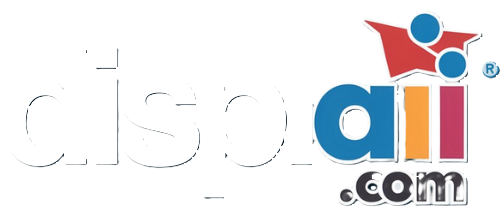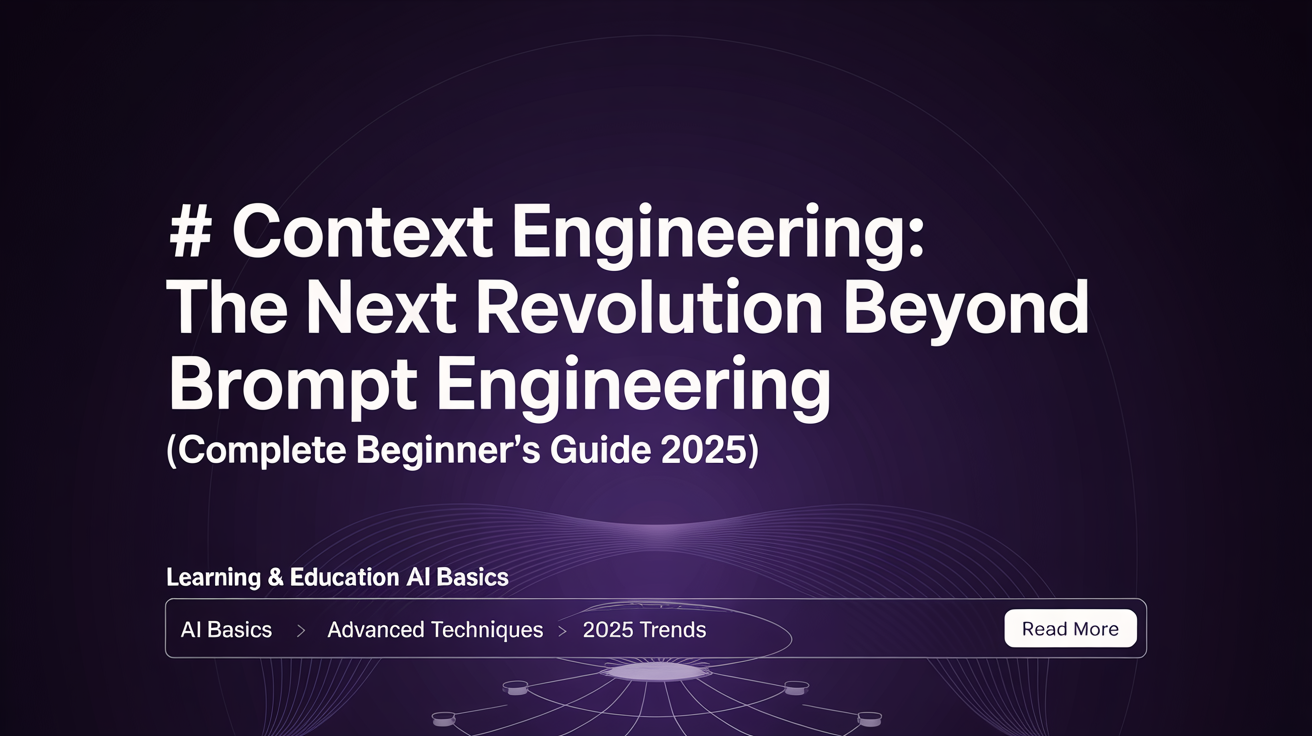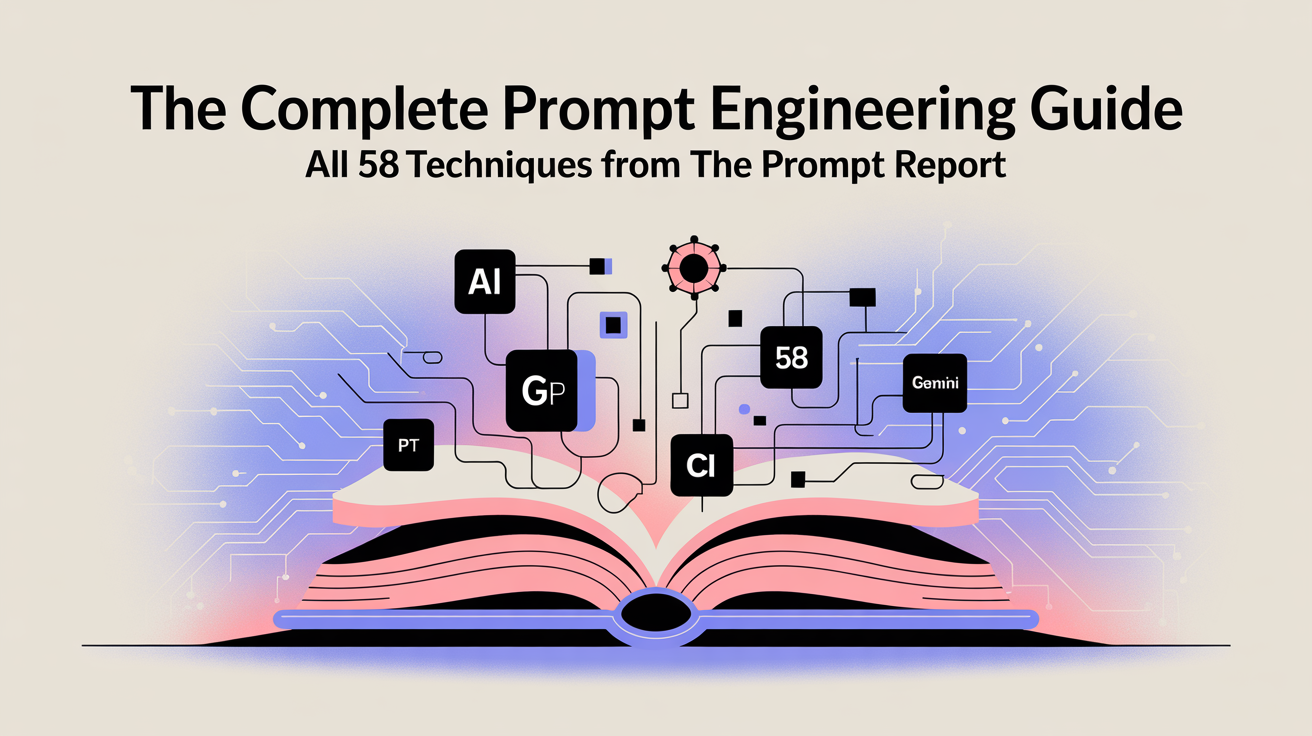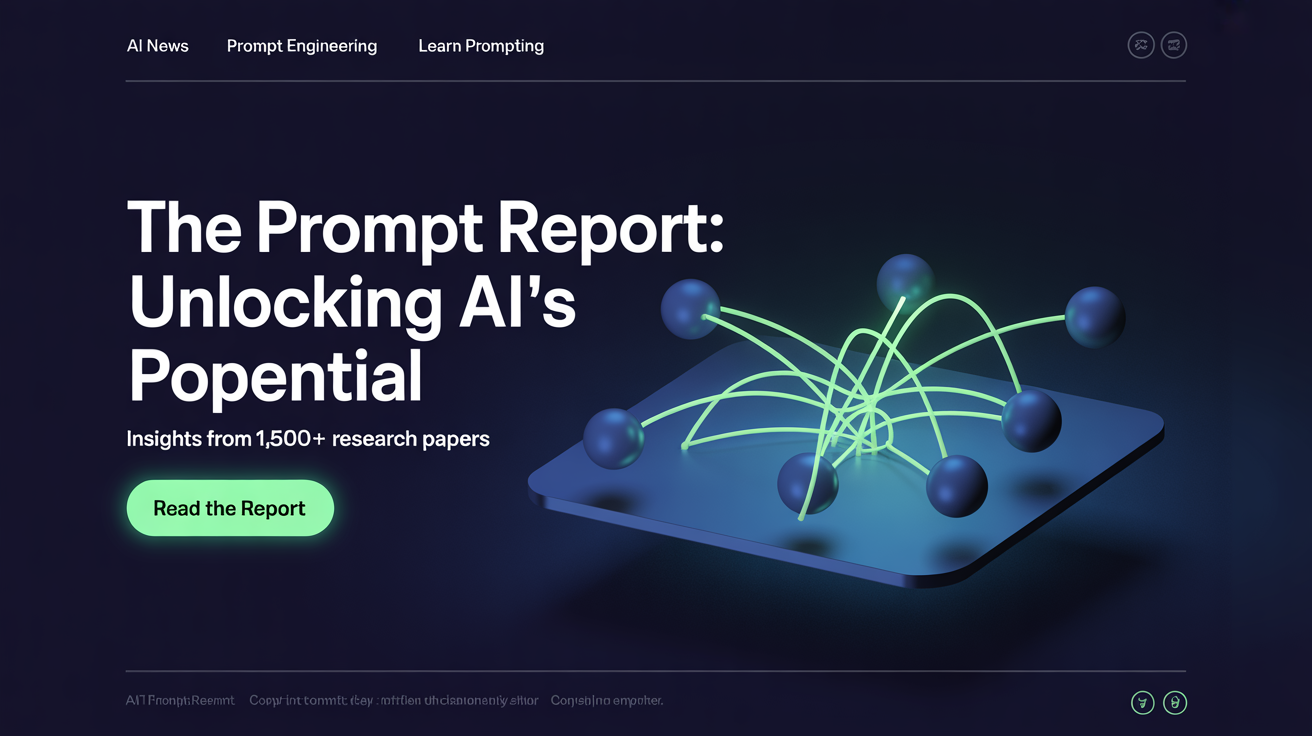Europe Just Released the World's First AI Rules - Here's What Changes for You
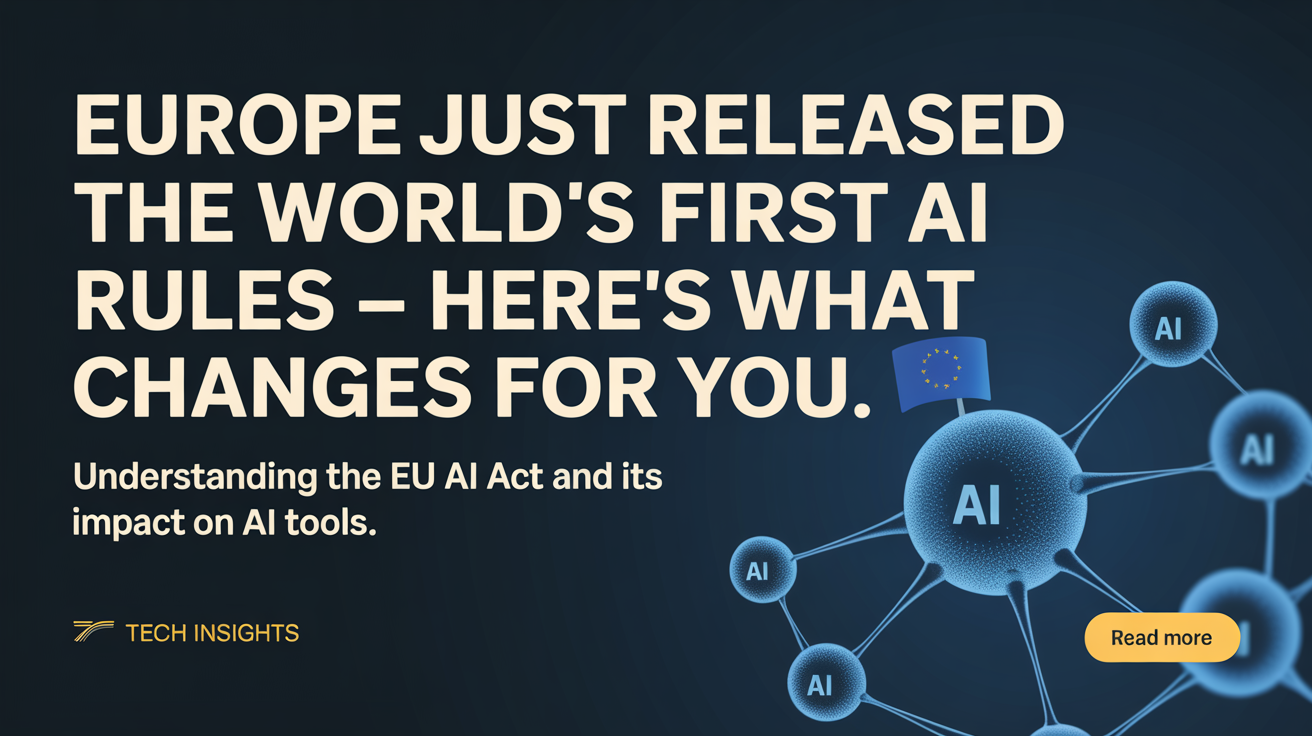
The European Commission just published guidelines that will change how every major AI company operates. This affects ChatGPT, Claude, Gemini, and every AI tool you use - here's what you need to know.
Confused by all the news about "EU AI Act guidelines" and wondering what this actually means for the AI tools you use every day? You're not alone. On July 18, 2025, the European Commission released something that will fundamentally change the AI landscape - and it's not just European companies that need to pay attention.
Here's what you'll understand in the next 10 minutes:
- What these new EU AI rules actually require (explained in plain English)
- Why ChatGPT, Claude, and other AI tools you use are scrambling to comply
- How this affects the AI services available to you starting August 2, 2025
- What "good" and "bad" outcomes this might create for regular AI users
- Simple ways to prepare for the changes coming to your favorite AI tools
WHAT Are These EU AI Guidelines? (The Universal Speed Limit for AI)
Think of It Like Driving Laws for AI
Remember when cars were first invented and there were no traffic rules? Drivers made up their own rules, speeds varied wildly, and accidents were common. Eventually, governments created driving laws - speed limits, safety requirements, licensing - to make roads safer for everyone.
The EU AI Act is like creating the world's first comprehensive "driving laws" for artificial intelligence.
Instead of letting AI companies make up their own rules about safety, transparency, and data use, Europe has created binding regulations that every AI company must follow if they want their tools used by European citizens.
What These Guidelines Actually Require
The July 18, 2025 guidelines focus on companies providing "general-purpose AI models" - think ChatGPT, Claude, Gemini, and similar tools that can do many different tasks.
Three main requirements:
- Transparency: Companies must clearly document how their AI works, what data they used to train it, and what it can and can't do
- Copyright Compliance: AI companies must prove they're not illegally using copyrighted material to train their models
- Safety Assessment: The most powerful AI systems must assess and report on potential risks they might pose to society
What Does This Actually Cost?
For AI companies:
- Compliance costs: Estimated millions of dollars for major companies like OpenAI and Google
- Documentation requirements: Extensive reporting and transparency measures
- Potential fines: Up to 7% of global revenue (that's billions for major companies)
- Legal certainty: Following the voluntary "Code of Practice" provides legal protection
For users like you:
- Free tier limitations: Some AI features might become paid-only to offset compliance costs
- Regional differences: AI tools might work differently in Europe vs other regions
- Delayed features: New AI capabilities might take longer to roll out
- Better transparency: You'll know more about how AI tools work and their limitations
WHERE Do These Rules Apply?
Geographic Scope
These rules apply to ANY AI company whose tools are used by people in the European Union - regardless of where the company is based.
This means:
- OpenAI (American company) must comply because Europeans use ChatGPT
- Anthropic (American company) must comply because Europeans use Claude
- Google (American company) must comply because Europeans use Gemini
- Any AI startup that serves European users must follow these rules
Practical Requirements for Implementation
What companies need to do by August 2, 2025:
- Document their AI models with detailed technical information
- Implement copyright policies showing they respect intellectual property
- Assess systemic risks for the most powerful AI systems
- Report to the European AI Office for ongoing oversight
Device and access compatibility:
- No changes to your current devices - these are business compliance rules, not technical requirements
- Browser compatibility remains the same
- Mobile apps continue working normally
- No special European-only AI tools required
WHO Is Behind These Rules and Who's Affected?
The European Commission's Role
The European Commission (basically the EU's executive branch) spent years developing these rules with input from:
- AI safety experts and researchers
- Major AI companies including OpenAI, Google, Microsoft
- Civil society organizations representing citizen interests
- Industry stakeholders across the AI supply chain
Why trust these rules?
- Transparent development process with public input over multiple years
- Based on expert analysis of real AI risks and benefits
- Balanced approach trying to encourage innovation while preventing harm
- Legal framework with proper oversight and enforcement mechanisms
Who's Already Preparing for Compliance?
Major AI companies that have publicly announced compliance efforts:
OpenAI - Announced July 11, 2025 they will sign the voluntary Code of Practice Microsoft - Published detailed compliance documentation and internal policy updates
Google - Reviewing the guidelines and preparing compliance measures Anthropic - Working on transparency documentation and safety assessments
Who Should Care About This?
Perfect for understanding if you:
- Use AI tools regularly for work, school, or personal projects
- Run a business that depends on AI services
- Are curious about how AI regulation will shape the future
- Want to understand why AI companies are making certain changes
Less immediately relevant if you:
- Rarely use AI tools and don't plan to increase usage
- Only use AI for very basic tasks like simple web searches
- Prefer to wait and see how regulations play out over time
WHEN Do These Rules Take Effect?
Critical Timeline for 2025
August 2, 2025 - The Big Date
This is when AI companies must start complying with the new rules. Any general-purpose AI model operating in the EU must meet transparency, copyright, and safety requirements.
July 10, 2025 - Code of Practice Published
The European Commission released a voluntary "Code of Practice" that companies can follow to demonstrate compliance more easily.
July 18, 2025 - Final Guidelines Released
The Commission published detailed guidelines explaining exactly what companies need to do to comply.
Enforcement Timeline
August 2, 2025 - February 2026: Learning Period
The European AI Office will work with companies to help them understand and implement the rules, focusing on education rather than penalties.
August 2, 2026: Full Enforcement Begins
Serious fines and enforcement actions can begin for companies that don't comply.
August 2, 2027: Extended Deadline
AI systems that were already on the market before August 2025 get extra time to fully comply.
Why the Timing Matters Now
This is happening because:
- AI has reached mainstream adoption - millions of people use these tools daily
- Potential risks have become clearer - from copyright violations to societal impacts
- Industry maturity - AI companies are stable enough to handle regulatory compliance
- Global leadership - Europe wants to set the standard for worldwide AI governance
WHY Should You Care About These EU AI Rules? (The Most Important Part)
Problems These Rules Solve for Regular Users
Frustration #1: "I don't know if AI is trained on stolen content"
Solution: Companies must prove they're respecting copyright and have policies for handling copyrighted material.
Frustration #2: "AI companies don't tell us about risks or limitations"
Solution: Transparency requirements mean you'll get clear documentation about what AI can and can't do.
Frustration #3: "I worry about AI being used for harmful purposes"
Solution: Safety assessments and risk evaluations for the most powerful AI systems.
Frustration #4: "AI development feels like the Wild West"
Solution: Clear legal framework with oversight and accountability for AI companies.
Real-World Impact You'll Notice
For Better Transparency:
- Clearer documentation about how AI tools work and their limitations
- Better copyright practices reducing legal risks for users
- Risk assessments for powerful AI systems that might affect society
- Complaint mechanisms for copyright holders and users
Potential Downsides:
- Slower innovation as companies focus resources on compliance
- Regional differences in AI capabilities between Europe and other regions
- Higher costs potentially leading to more paid features
- Conservative approaches as companies avoid regulatory risks
Why This Matters More Than Other AI News
This isn't just another tech announcement - it's the first comprehensive legal framework governing AI that major companies actually have to follow.
Think of it this way: Previous AI news was like concept car announcements. This is like new safety standards that every car manufacturer must follow before selling vehicles.
Global Impact:
- Other countries are watching and likely to create similar rules
- Industry standards will be influenced by European requirements
- Your local AI companies will need to consider these rules if they want global reach
HOW Will This Affect Your AI Experience? (Practical Changes Coming)
Changes You'll Likely Notice
In Popular AI Tools:
ChatGPT (OpenAI):
- More detailed documentation about capabilities and limitations
- Clearer copyright policies and usage guidelines
- Possible feature differences between European and non-European versions
- Enhanced transparency about training data and methods
Claude (Anthropic):
- Updated terms of service explaining compliance measures
- More comprehensive safety documentation
- Detailed explanations of model capabilities and restrictions
- Enhanced user guidance about appropriate use cases
Gemini (Google):
- Improved transparency about data sources and training methods
- Updated privacy and copyright policies
- More detailed risk assessments for advanced features
- Enhanced user education about AI limitations
What Companies Are Actually Doing
OpenAI's Approach:
- Signed the voluntary Code of Practice on July 11, 2025
- Published updated safety frameworks and documentation
- Created new transparency reports about model capabilities
- Enhanced copyright compliance procedures
Microsoft's Strategy:
- Developed internal compliance tools and review processes
- Updated product documentation for enterprise customers
- Created EU-specific guidance for business users
- Enhanced monitoring for prohibited AI uses
Google's Preparation:
- Reviewing all guidelines for compliance gaps
- Updating documentation and transparency reports
- Enhancing copyright protection measures
- Preparing risk assessments for advanced models
How to Prepare for These Changes
As a Regular User:
Stay Informed:
- Read updated terms of service when AI companies send notifications
- Check company transparency reports to understand how tools work
- Follow official company blogs for compliance updates
- Be aware of regional differences if you travel between regions
Adjust Your Usage:
- Review copyright policies if you use AI for content creation
- Understand new limitations that might be introduced
- Prepare for potential feature changes in European markets
- Consider alternative tools if specific features become restricted
For Business Users:
- Review your AI tool dependencies and compliance requirements
- Update internal policies based on new transparency information
- Monitor regulatory developments that might affect your industry
- Consider data residency requirements for European operations
What to Do When Changes Roll Out
When you see compliance updates:
- Read the notifications - companies must explain significant changes
- Check new documentation - it will be more detailed and useful than before
- Test your workflows - some features might work differently
- Reach out for support - companies will have enhanced compliance support
If you experience problems:
- Use official support channels - companies are required to have better support systems
- Reference the new documentation - it should be more comprehensive
- Check community forums - other users will be experiencing similar changes
- Consider European vs non-European alternatives if regional differences matter
Real User Experiences and Industry Reactions
What Major Companies Are Saying
OpenAI's Statement (July 11, 2025):
"By signing the Code we are taking a concrete step in our broader compliance plan with the EU AI Act. It reflects our commitment to ensuring continuity, reliability, and trust as regulations take effect."
Microsoft's Approach:
"We are ready to help our customers do two things at once: innovate with AI and comply with the EU AI Act. We are building our products and services to comply with our obligations."
Industry Analysis:
Currently, only an estimated 5-15 companies worldwide (OpenAI, Anthropic, Google, Microsoft, etc.) are subject to the most stringent requirements, but this number will grow as AI technology advances.
Early Compliance Experiences
Positive Reactions:
- Legal certainty - Companies appreciate having clear rules instead of uncertainty
- Competitive advantage - Early compliance can be a selling point to European customers
- Global standards - Many companies see EU rules as setting worldwide best practices
- Innovation focus - Clear boundaries allow companies to innovate within defined limits
Challenges Reported:
- Documentation burden - Extensive transparency requirements take significant resources
- Technical complexity - Some requirements are difficult to implement with current technology
- Cost implications - Compliance adds significant operational expenses
- Timeline pressure - August 2025 deadline creates urgency for major changes
What This Means for Competition
Advantages for Large Companies:
- Resource availability to handle complex compliance requirements
- Legal teams capable of navigating regulatory complexity
- Market position strengthened if smaller competitors struggle with compliance
- Global reach justified by regulatory investment
Challenges for Startups:
- Compliance costs might be prohibitive for small AI companies
- Resource diversion from product development to regulatory compliance
- Market barriers created by complex regulatory requirements
- Uncertainty about whether regulations favor established players
Honest Pros and Cons
Pros
- Better transparency about how AI tools actually work
- Copyright protection for creators and content owners
- Safety oversight for the most powerful AI systems
- Legal framework providing predictability for businesses and users
- Global influence likely to improve AI practices worldwide
- User rights strengthened through formal complaint mechanisms
Cons
- Innovation slowdown as companies focus on compliance rather than new features
- Higher costs potentially leading to reduced free features
- Regional fragmentation with different AI capabilities in different markets
- Regulatory uncertainty as rules are interpreted and enforced
- Competitive disadvantages for European AI companies vs global competitors
- Bureaucratic overhead potentially stifling smaller AI innovations
What's Coming Next in EU AI Regulation
Near-term Developments (Rest of 2025)
August 2, 2025:
- All major AI companies must comply with basic transparency and copyright requirements
- Voluntary Code of Practice becomes available for companies to sign
- European AI Office begins oversight and guidance activities
September-December 2025:
- Member states assessment of the Code of Practice adequacy
- Publication of additional guidance on key definitions and scope
- First compliance reports from major AI companies
- Potential adjustments based on early implementation experiences
Medium-term Changes (2026-2027)
August 2026:
- Full enforcement powers take effect with potential fines up to 7% of global revenue
- Comprehensive compliance audits for major AI companies
- Potential expansion of rules to additional AI systems and use cases
August 2027:
- Final compliance deadline for AI systems that were on the market before August 2025
- Full regulatory framework operational across all EU member states
- Potential model for international AI regulation standards
Global Implications
Other Jurisdictions:
- United States considering federal AI regulation influenced by EU approach
- United Kingdom developing AI governance framework with EU coordination
- Asia-Pacific regions monitoring EU implementation for their own regulations
- International standards bodies incorporating EU AI Act principles
Industry Evolution:
- Global compliance standards emerging based on EU requirements
- AI safety practices becoming industry standard worldwide
- Transparency norms spreading beyond regulatory requirements
- International cooperation on AI governance frameworks
Should You Be Worried or Excited?
Reasons to Be Optimistic
Better AI Products:
- More transparent tools with clearer capabilities and limitations
- Safer AI systems with proper risk assessment and mitigation
- Copyright-compliant training reducing legal risks for users
- Accountable companies with formal oversight and complaint mechanisms
Global Benefits:
- International standards improving AI safety worldwide
- Innovation within boundaries encouraging responsible development
- User empowerment through better information and rights
- Industry maturation moving from experimental to reliable AI services
Legitimate Concerns
Potential Drawbacks:
- Innovation slowdown in Europe compared to less regulated markets
- Higher costs passed on to users through reduced free features
- Market concentration if only large companies can afford compliance
- Regulatory capture if rules favor established players over newcomers
Uncertainty Factors:
- Implementation details still being worked out
- Enforcement approaches unknown until 2026
- International coordination uncertain as other countries develop their own rules
- Technology evolution potentially outpacing regulatory frameworks
The Balanced Perspective
This is likely the beginning of a new phase in AI development where innovation happens within clear legal frameworks rather than in an unregulated environment.
For most users, the immediate impact will be modest - better documentation, clearer policies, and gradual improvements in AI transparency and safety.
The long-term implications are more significant - this regulatory framework will likely influence AI development globally and set precedents for emerging technologies.
The Bottom Line
The European Commission's AI guidelines represent the world's first comprehensive attempt to regulate artificial intelligence. Starting August 2, 2025, every major AI company serving European users must comply with new transparency, copyright, and safety requirements.
For regular AI users, this means:
- Better information about how AI tools work and their limitations
- Stronger copyright protections for creators and content
- Safety oversight for the most powerful AI systems
- Potential trade-offs in terms of innovation speed and feature availability
The companies are taking this seriously - OpenAI, Microsoft, Google, and others are investing heavily in compliance and see this as the new reality for AI development.
This is bigger than just European regulation - these rules will likely influence AI development worldwide and set the template for other countries' AI governance frameworks.
The changes won't happen overnight but will roll out gradually as companies implement new systems and processes to meet the requirements.
What questions do you have about the EU AI Act and how it might affect the AI tools you use? Share your thoughts in the comments - this is a complex topic and your perspective helps everyone understand the real-world implications.
Want to stay updated on how these regulations affect your favorite AI tools? Subscribe to our newsletter for beginner-friendly coverage of AI regulatory developments that actually matter to users.
Curious about specific AI tools and their compliance efforts? Let us know which companies or services you'd like us to investigate and explain in future articles.
Sources:

